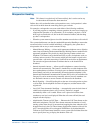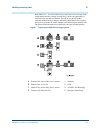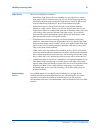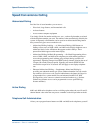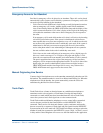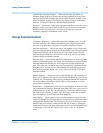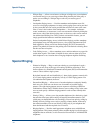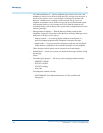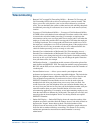
Speed/Convenience Calling
119
Overview for Avaya IP600 Internet Protocol Communications Server
555-233-001 — Issue 5 — November 2000
B
Emergency Access to the Attendant
Provides for emergency calls to be placed to an Attendant. These calls can be placed
automatically by the system or can be dialed by system users. Emergency access calls
can receive priority handling by the Attendant.
• Crisis Alert uses both audible and visual alerting to notify designated extensions
when an emergency call is made. Audible alerting sounds like an ambulance
siren. Visual alerting flashes the CRSS-ALRT button lamp and the display of the
caller’s name and extension. Crisis Alert’s display of the origin of the emergency
call enables the attendant or other user to direct emergency-service response to
the caller.
If an emergency call is made while another crisis alert is still active, the incoming
call will be placed in the queue. If the system is administered so that all users
must respond, then every user must respond to every call, in which case the calls
are not necessarily queued in the order in which they were made. If the system is
administered so that only one user must respond, the first crisis alert remains
active at the phone where it was acknowledged. Subsequent calls are queued to
the next available station in the order in which they were made.
Crisis Alert can also send notification of an emergency call to a digital pager. In
this case, it sends a message of 7 to 22 digits to the pager and displays a crisis
alert code, an extension and room number, and a main number (if one is entered).
The person paged thus knows the origin of the emergency call and can direct
emergency-service response to the appropriate location. To use Crisis Alert with a
digital pager, the system is administered so that at least one digital set has a
CRSS-ALRT button and the Alert Pager field is set to y. Any station with a
CRSS-ALRT button and a pager receives the correct alert.
Manual Originating Line Service
Connects single-line telephone users to the attendant automatically when the user lifts
the handset. The attendant number is stored in an Abbreviated Dialing list. When the
telephone user lifts the handset, the system automatically routes the call to the
attendant using the Hot Line Service feature.
Trunk Flash
Trunk Flash allows a feature or function button on a multifunction telephone or
attendant console to be assigned as a Flash button. Pressing this button while
connected to a trunk (which must have been administered to allow Trunk Flash)
causes the system to send a flash signal out over the connected trunk.
Trunk Flash enables multifunction telephones to access central office customized
services that are provided by the Central Office to which DEFINITY ECS is
connected. These services are electronic features, such as conference and transfer,
that are accessed by a sequence of flash signal and dial signals from the DEFINITY
System station on an active trunk call. The Trunk Flash feature can help to reduce the
number of trunk lines connected to the DEFINITY system. “Digit 1 as Flash” as used
in Italy and the United Kingdom will not serve as the flash button in this application.



